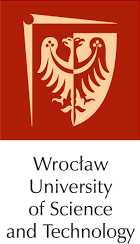| no | lecture | slides |
|---|
| 1 |
Introduction. Artificial intelligence. |
 |
|---|
| Introduction. Computer Vision. |
|
|---|
| 2 |
Searching for solutions. Uninformed search strategies. |
 |
|---|
| 3 |
Image sampling. Theory and hardware implementations. |
|
|---|
| 4 |
Informed search strategies. Heuristic evaluations functions. |
 |
|---|
| 5 |
Splines and interpolation. Demosaicking. |
|
|---|
| 6 |
Local search algorithms. On-line search agents. Searching in games. Minimax algorithm. |
 |
|---|
| 7 |
Orthogonal series and approximation. |
|
|---|
| 8 |
Knowledge-based agents. Knowledge representation using propositional calculus and predicate calculus. |
ArtInt2e
Prolog |
|---|
| 9 |
Noise in imaging. Anscombe transform. |
|
|---|
| 10 |
Logic programming. Horn clauses. Prolog |
 |
|---|
| 11 |
Convolution and image filtering. |
|
|---|
| 12 |
Probabilistic representation. Conditional probability. Bayes' rule. Bayesian networks. |
 |
|---|
| 13 |
Shape detection, object tracking. |
|
|---|
| 14 |
Action planning. |
 |
|---|
| 15 |
Scene reconstruction, motion capture and gesture recognition. |
|
|---|














